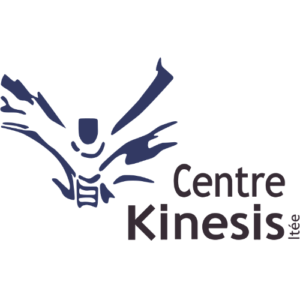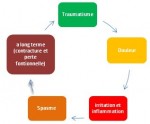Who to see when?
Faced with the panoply of choices of therapies offered, it can be difficult to determine which type of treatment would suit us best.
The first thing we need to realize is that there are as many therapies as there are people.
For example, two students who take their training in physiotherapy or Swedish massage with the same teachers, will not work in the same way. For what? The answer is simple; therapy is not just a matter of techniques that you learn by heart and repeat without thinking. The treatment will be influenced by the experience and personality of the therapist.
It is the same for all health professionals. A physiotherapist who continues with osteopathy will not treat in the same way as a massage therapist who completes his training in osteopathy. Just as a massage therapist who works with a biomechanical approach (physiotherapist, sportsman, myo fascial, deep tissue) will not be at all the same therapist as a massage therapist who has worked in energy (shiatsu, polarity, Chinese energy massage, reflexology ).
Very brief description of the different therapies:
Osteopath: specialist in globality.
Osteopathy is a generally gentle therapeutic manual approach that aims to restore mobility to restricted structures (joints, muscles, fascias, organs (viscera), skull, etc.) with the aim of restoring vitality, improving movement and circulation and allows the body to normalize and eliminate its compensations.
For example, a person who makes a false movement and gets the D6 vertebra stuck (between the shoulder blades), will first feel a sharp and intense pain which is often similar to a “stabbing sensation”. The body will then place itself in a protective mechanism to protect itself and it will become blocked by the stiffness and tensions that gradually build up. To counter pain, spasms and fatigue, the body will compensate: changes in posture, reduction in functional capacity and energy... A vertebra displaced or stuck in a bad position can irritate the nerve root which exits through the holes of conjugation of this vertebral level. In addition to causing pain, an irritated nerve can cause a functional reduction in the organs it innervates. For example, the stomach is innervated by nerves originating from vertebrae D5 to D9 and the vagus nerve cranially. Continuing our previous example, our famous blocked D6 vertebra could therefore cause digestive difficulties, such as gastric reflux or bloating.
The osteopath approaches the problem with a global vision of the body and takes into consideration all the physical and emotional factors that can disturb the patient's homeostasis (the body's ability to remain balanced and functional). He has several types of manual techniques to release tension: myofascial techniques (balancing, tensioning, myofascial release techniques, etc.), 'muscle energy' which combines muscle contractions and stretching, cranial and cranial techniques. -sacred to restore vitality to the body, promote hormonal balance, reduce inflammation and pain, mobilizations to regain range of motion as well as osteo-articular techniques (which are similar to chiropractic manipulations, but more gentle) to correct a displaced vertebra or joint, fluid techniques to improve circulation and reduce edema (swelling), emotional release techniques, to eliminate tissue memories of trauma, visceral techniques to release tension on the organs in order to improve hormonal, digestive, respiratory, gynecological functions...
Since the osteopath seeks to release the compensations and constraints imposed on the body by seeking the cause of the problem rather than focusing solely on the symptoms and that these compensations occur in the medium and long term (chronic condition), it is necessary to rely on a few sessions (usually three close together) before feeling well-being. Thereafter, treatments every four to six weeks and then as needed are offered.
Why see an osteopath?
Chronic pain with compensation, pain affecting the different systems (digestive, menstrual, etc.) for migraines, pregnancy, babies, etc.
Chiropractor: specialist in displaced vertebrae
Why see a Chiro?
Following a trauma that would have caused a vertebral displacement with nerve pinching. With vigorous manual manipulations performed on the spine, the chiropractor should be able to fix the problem in one or two sessions. If it suggests more than two weeks of adjustments, it would be important to consider combining the treatment with massage therapy in order to promote the release of spasms that keep the vertebra in lesion. We must visualize a joint as being two bones held together by cords (ligaments) which move thanks to the muscular contraction of the muscles which are attached to the bones by the tendons. For the manipulation to be effective and for the blockage not to return after a few hours, the muscles must be flexible and relaxed enough not to pull on the bones.
Physiotherapist: specialist in acute inflammation and rehabilitation
Why see a Physio?
Following a soft tissue injury that has created edema and inflammation, physiotherapy is highly indicated within 72 hours of the trauma and during the active rehabilitation phase. Physiotherapists often work with work or road accident victims or with patients after an operation or prolonged immobilization. The treatment is rarely individual and includes several modalities: heat, exercises, mobilizations, stretching, vigorous massages, electrotherapy devices (TENS, interferential, laser, ultrasound), ice… All this with the aim of controlling inflammation and swelling, decrease pain and restore the patient's mobility and strength. The physiotherapist focuses on treating the injured area. For example, if you consult him for shoulder tendinitis, he will take care of the shoulder joint and everything related to it, but will not treat the pain, tension or compensation caused by this injury. The combination of physiotherapy / massage therapy, physio / acupuncture or physio / osteopathy treatment is interesting because it allows faster results and to work the body globally, to have an effect on several discomforts or symptoms that bother you.
Acupuncturist: System startup specialist
Acupuncture is a therapeutic approach in Chinese medicine and has been recognized for millennia. It is based on the fact that the human body has vital energy (Qi) which circulates everywhere via meridians. Essential, this energy makes it possible to maintain the physiological functions of the different systems (musculoskeletal, nervous, hormonal, brain, digestive, immune, gynecological, etc.)
Acupuncture is an effective global therapy and allows you to work on several problems at the same time, in a few sessions.
Why see an acupuncturist?
When our system is in total exhaustion, lacking energy, to reduce pain (both chronic and acute) and inflammation, to release muscle spasms, to increase concentration, to improve digestion, to facilitate childbirth, to promote sleep and energy.
Biomechanical massage therapist: specialist in the relaxation of soft tissues (muscles, tendons, ligaments, and fascias)
Thanks to numerous manual techniques (fascia therapy, massage, stretching, etc.), the massage therapist will create space in the body envelope to allow the body to recover its functions. If the tissue envelopes become too tight or tense, nervous and vascular circulation is reduced, so this injured region will be less nourished and cleaned, which will cause congestion and an increase in metabolic waste and toxins. By relaxing the envelopes and soft tissues, circulation is improved and the body can relax and function better (strength, mobility, endurance, recovery, etc.)
Why see a biomechanical massage therapist?
Following a trauma that created protective muscle spasms, tendinitis, bursitis, periostitis, sequelae of sprains, poor posture, repetitive movements...
Energy Massage Therapist: specialist in energy rebalancing
Chinese medicine says that we have a certain amount of energy available and that this energy must be distributed equally throughout our body. Following a trauma or an injury, an imbalance is created (either too full or too empty) and the energy circulates with difficulty, which generates pain, fatigue, poor recovery….
Why see an energy massage therapist? To bring the body back into an energy balance, to harmonize the physical and the psychic.
Yanic Szoghy
Sports massage therapist and director
Eliane Bousquet
Sports massage therapist, osteopathic practitioner, graduate in physical rehabilitation and director



